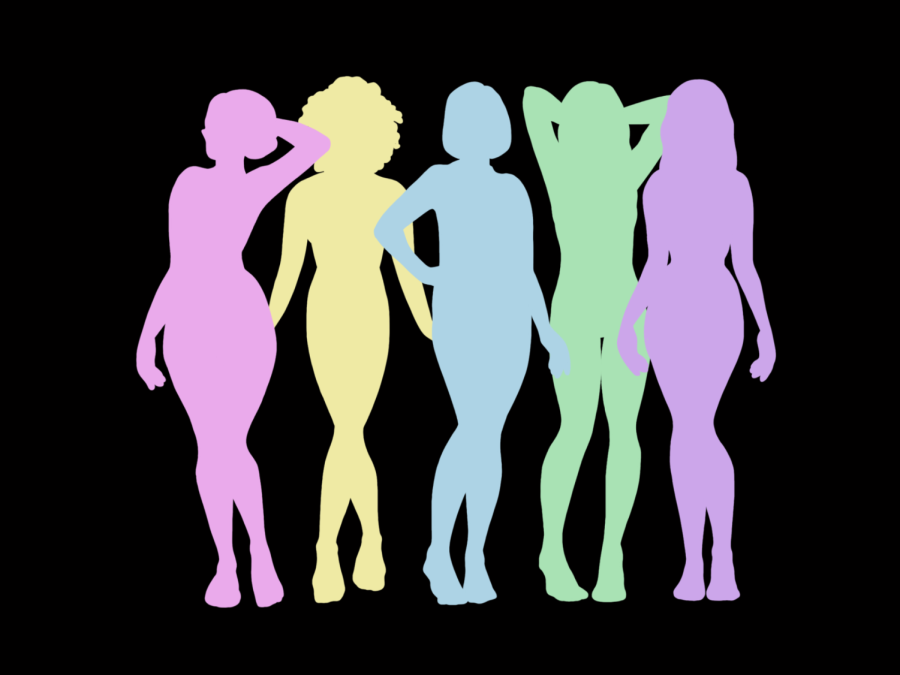Column: Fashion month emerges from the pandemic with a lot to say
This autumn’s fashion month showcased designs for next year’s spring and summer season. This runway season marked the fashion industry’s full-force return from pandemic isolation.
October 31, 2022
Throughout the month of September, the fashion industry filled runways in New York, London, Milan and Paris with a series of season-defining shows.
The spring and summer 2023 showcases marked the first time in two years that many designers got to show their work in person at the four major fashion hubs of the world. The collections of the season gravitated toward diverse, genderless designs. Attendees saw models walking in unisex clothes that defied gender societal stereotypes, and indicated a future shift in mainstream fashion. Walking through each week of fashion month lends a sharper look at next year’s fashion world.
New York Fashion Week began the month of runways with a star-studded send-off. Rapper Lil Nas X made his runway debut at Coach’s presentation and Fendi also came to New York City for this season. Emulating professionalism, other houses like LaQuan Smith emphasized utilitarian codes of “everything and nothing” inspired by the pandemic.
Across the ocean in London, designer Paria Farzaneh celebrated her Iranian heritage in her presentation. Her collection featured geometric textures and even sampled garments from her grandmother’s bathroom curtains. Menswear trends borrowed from traditionally feminine pieces with laced designs, floral motifs and even maxi skirts, which were the center of Stefan Cooke’s collection. Pam Hogg, a designer and musician, provided an accessible “ready-to-wear” collection with vibrant silhouettes. Rixo placed an emphasis on ethical environmental and labor conditions, promising that the house used small suppliers over mass production methods to create its spring collection. Edeline Lee continued this thread of culture-conscious collections with her nods to female power in mythology made of recycled fabrics.
In the third week of fashion month, Milan turned to bright, eccentric designs. Historically, Milan tends to fall under the shadows of the other three cities, as they host only 70 shows during fashion week compared to 300 in London. But this year’s rebellious design trends pushed against the city’s Fashion Week reputation.
Gaetano Pesce, an Italian designer and architect for Bottega Veneta, spoke about his work for the house saying, “This space is a tribute to diversity.”
Pesce designed 400 unique resin-style chairs by hand. Each chair had original, unique elements, like smiley faces and bottles. He wanted to emphasize the value of manual labor, making a statement against machines and artificial intelligence in art and criticizing the standardization of designs. Bottega invited the public to the show to push against the elitist environment of fashion month. Over 3,000 non-industry guests came to the presentation in a monumental moment. Moncler celebrated its 70th anniversary with all of its 18,000 participants dressed in white Moncler jackets. Many designers across Milan used metallics and put a twist on early 2000s trends to revive them and bring them back into current styles.
To finish out the month, model Bella Hadid took over Paris Fashion Week. Hadid walked onto the Coperni runway scarcely clothed in a spray-on white dress that merged science and fashion. Manel Torres, the creator of the spray technology Fabrican, and two other scientists sprayed a liquid onto Hadid that transformed almost instantly into a wearable, walkable dress. The spectacle seemed to take after the 1999 Alexander McQueen show in which robotic arms spray painted model Shalom Harlow’s dress.
Meanwhile, at Balenciaga, creative director Demna Gvasalia focused on dystopian themes. He used a dreary mudscape to illustrate the constraints of being in a “box” of identities and ideas, and Kanye West — who made headlines when he presented a “White Lives Matter” shirt at his own show at Paris Fashion Week — opened Balenciaga’s show with an all-black militant look.
Cher closed out Balmain with her hit song “Strong Enough.” In a tweet, Cher wrote, “skipping down the runway made me think woman.” She encouraged everyone to “do your best” and strut everywhere with confidence.
Fashion month gave the industry much to talk about. Many designers used the stage to present their core beliefs — and whether it meant celebrating diversity or divisiveness depended on the individual creative director. One thing is clear: the past four Fashion Weeks have shown that ethical conditions and sustainability in producing those commentary-heavy creations are becoming a priority. After two years relatively out of commission, designers around the world are looking to the future of fashion.







